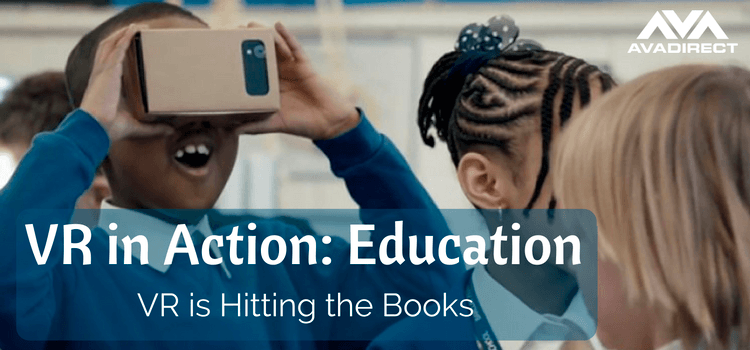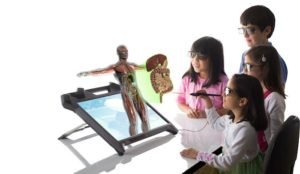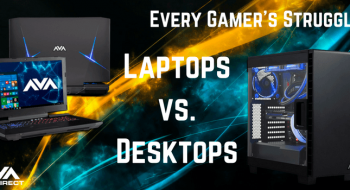2016 has been named the year for virtual reality, and it’s no surprise why. The virtual experiences available are multiplying daily, and are continuing to affect industries outside of gaming. One of these places is actually the classroom. Teachers are incorporating VR into their classrooms, and many are loving it.
Virtual Reality has so many uses that can be applied to a classroom. The first is obvious. Students can put on a headset and be immersed in an environment or place that they otherwise would be unable to go to. They could become historians, watching historical events from a first person perspective. In addition, VR is allowing simulations of experiences that most kids only dream of. Students can stand among a construction site, and watch a sky scraper being built as a supplement to an engineering or architecture class, or watch a plane take off in physics.
Virtual Reality allows students of all ages to travel and explore their world, without actually having to leave the safety of a classroom. Experiencing a new country or a new language in a first person experience would help students gain invaluable knowledge, and create a new desire to learn.
PROS:
Students participate in an active experience
Instead of boring lectures and sitting at a desk, crunching through yet another practice problem, VR is opening up a new door. Using either the headsets or a desktop display, students can be completely immersed into a virtual world. Instead of looking at pictures of bugs, they can watch these bugs move up close and personal, in a way a video can’t do.
Kids are more motivated
Remember when you wished the school day would just end and that your teacher sounded exactly like their Charlie Brown doppelganger? VR is creating an opportunity for students to actually be excited and motivated to learn. Increasing motivation has always been a challenge for teachers, but now VR can help motivate and nurture a student’s passion for learning science or history, even when it is boring.
VR Appeals to all learning styles
Psychologists have proven that not everyone learns the exact same way. Some learn by seeing, some by working with their hands, and others by listening. VR incorporates multiple learning styles when used in a classroom, which makes it an invaluable tool for teachers. By using VR in the classroom, teaching students one topic becomes more versatile than ever.
Students collaborate and interact with each other more
One considerable challenge for teachers is getting children to work in groups or even as a classroom to learn something. Often times, group work turns into social time, and creates slight chaos in class. The immersion from the VR allows students to focus more on the task at hand, and even encourage shy, quiet students to connect with their peers in a bond over the new technology.
CONS:
VR headsets and equipment can be extremely costly
It shouldn’t be a surprise that this is at the top of the list. Technology is expensive, when compared to books and pencils. Affording headsets for 20 students in a single classroom could be challenging, especially for smaller districts, with less funds. Not only are the headsets expensive, but considerations also have to be made for the applications and corresponding tech to go with the VR.
Distribution becomes difficult among classrooms
Purchasing headsets for every student may not be a feasible option for many schools or the best option. Many schools have a whole cart of laptops that can be shared among classrooms. The other hassle with having any sort of technology is that you have to take time out of a lesson to pass out all of the technology, instruct the students how to use it, and troubleshoot, all while trying to create a productive activity that they can learn from. This is often the most challenging part of having technology in the classroom, and VR would be no exception.
Usage time could affect student’s health
Many parents and health professionals are extremely concerned with young people and the dreaded effects of too much screen time. VR, again is no exception. Experts are recommending that children younger than 13 years old should have extremely limited exposure so that it does not affect their eyesight. Precautions would definitely have to be taken to counteract these effects.
Implementation and school capability
The final drawback of having VR in the classroom is just whether or not the school is capable of sustaining such technology. Do they have a strong enough Wi-Fi? Can the school create a space where students can use VR without tripping on desks? In addition, many schools and teachers will meet strong opposition from anti-tech people and parents of all kinds who think that technology is a terrible thing. With all of the opportunities that virtual reality could bring to a classroom, it is hard to imagine anyone who would deny these students the opportunity to learn in a new and big way.
Teachers across the globe are incorporating virtual reality into their classrooms and are seeing great success with the performance and engagement of their students. The positive results are extremely encouraging, and they continue to benefit classrooms. Virtual Reality could be the new way of learning in many places. As a parent, how would you feel about VR in your child’s classroom? As a teacher, do you think using VR could help, or is helping? Tell us what you think on Facebook, Twitter, and right here on our blog.











No comments yet